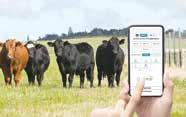






TWO LEADING New Zealand trade experts warn that the 15% tariff slapped by the US shouldn’t be taken lightly. The tariff could go higher and be hugely disruptive to the agriculture sector, NZ’s main export earner.
Former Trade Minister and trade negotiator Tim Grosser says the 15% tariff imposed on NZ is a floor price, not a ceiling, and there’s a possibility further tariffs could be added in future.
He says it’s still uncertain whether the 15% tariff announced by US President Donald Trump includes the existing tariffs imposed on NZ exports to the US that were negotiated about 30 years ago, or is on top of these.
“NZ is not out of the woods yet and there is a high degree of uncertainty surrounding the announcement by Donald Trump as no details have been provided,” he told Rural News.
Grosser says it’s important to not just focus on the 15% tariff, but to look globally at the wider impacts for NZ of varying tariff rates being applied to other countries - something he calls a “crude piece of economic nonsense”.
He says the impacts of the tariffs will cause chaos in some of the economies that are extremely important trading partners with us.
He says over the years NZ has developed new markets in countries which 20 years ago as a trade negotiator he would never have thought about.
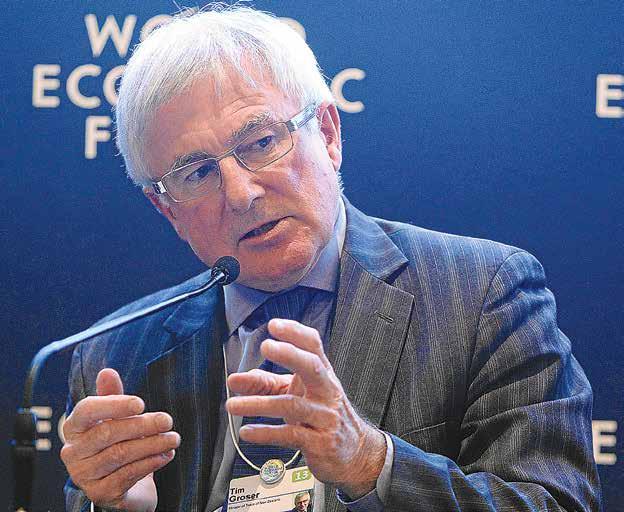
Vietnam – now NZ’s second largest market for apples. He says the growth rate of Vietnam has been phenomenal but now that Trump has forced that country to accept a tariff rate of 19%, the future for NZ sales there could be endangered.
pressure Trump to take a harder line against exporting countries like us.
“What I’m saying is that we can’t assume that the very steady export growth and progress in diversifying our agricultural exports is going to proceed as smoothly in the next five years as it did in the last 10 years,” he says.
tariff rate imposed on NZ is 5% higher than Australia, which has a free trade deal with the US, and that could widen the gap between the trans–Tasman nations.
adds, amongst the chaos there may be opportunities. He says what concerns him most is that now that the 15% tariff has been imposed, there is every chance that even if a new administration takes office in the USA, these will not be removed and could be there for years, possibly decades, to come.
Petersen says that the way this is playing out, NZ could find itself at a disadvantage to the likes of Australia, Argentina and Uruguay.
“The other frustrating thing is that the decision was made about NZ without us being able to have any real input into that,” he told Rural News
Both Petersen and Grosser are concerned about the effects of high tariffs imposed on a country such as Brazil – a major exporter of beef to the US.
Petersen says their high tariff rate effectively cuts them out of the US market and that raises the question of where all that meat will end up. Some say China, but the word is that China is already investigating the level of its beef imports.
“So right now no one knows what is happening and no one fully understands the implications of the US tariff policy,” he says.
Trade Minister Todd McClay says the tariffs risk harming exporters and consumers of both countries.
McClay is seeking an audience with US Trade Representative to make New Zealand’s position clear.
Grosser points to the example of
“The US currently faces an average tariff of just 0.8% when exporting to New Zealand, far lower than what we face into their market,” McClay says. PETER
He adds that some of the farm lobby groups in the US may try to
Grosser also notes that the 15%
Former special agricultural trade envoy Mike Petersen believes the 15% tariff is going to be hugely disruptive for the NZ agri-sector, although he






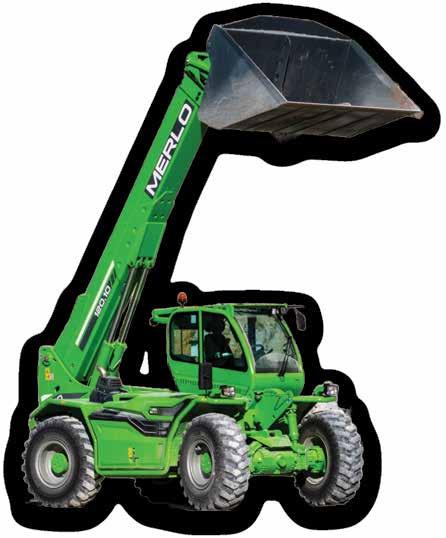
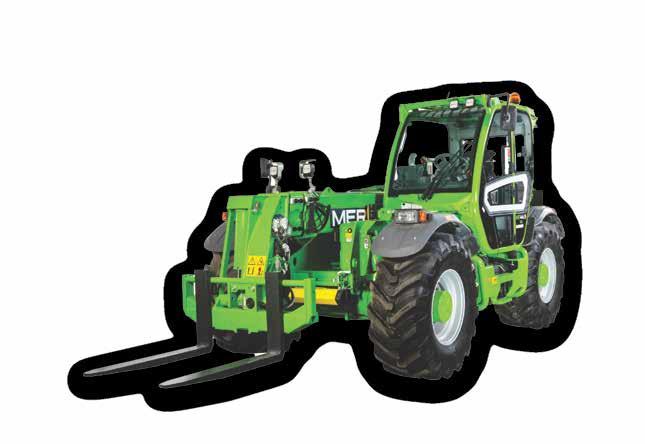



HEAD OFFICE
Lower Ground Floor, 29 Northcroft Street, Takapuna, Auckland 0622
Phone: 09-307 0399
Fax: 09-307 0122
POSTAL ADDRESS
PO Box 331100, Takapuna, Auckland 0740
Published by: Rural News Group
Printed by: Inkwise NZ Ltd
CONTACTS
Editorial: editor@ruralnews.co.nz
Advertising material: davef@ruralnews.co.nz
Rural News online: www.ruralnews.co.nz
Subscriptions: subsrndn@ruralnews.co.nz
SUDESH KISSUN sudeshk@ruralnews.co.nz
SHEEP AND beef farmers are cautiously optimistic as farmgate prices continue to firm.
However, after several years of low returns, most farmers are catching up on deferred expenditure and managing ongoing debt repayments and remain wary of price fluctuations.
Federated Farmers meat and wool chair Richard Dawkins told Rural News that there is a sense of renewed confidence and cautious optimism among the Feds meat and wool council.
He says that is reflected in their recent Farm Confidence Survey, which recorded a net positive sentiment from farmers across the country.
“That said, not all responses were optimistic,” says Dawkins.
“Many farm businesses are still feeling the cumulative pressure of onfarm inflation and several years of low returns. As a result, there’s a need to catch up on deferred expenditure and manage ongoing debt repayments.
“So, while finances and confidence are improving, financial resilience is still being rebuilt.”
Lamb and beef prices continued their upward trend, climbing 0.5% and 0.8% respectively so far this month, according to ASB senior economist Chris Tennent-Brown.
He notes that compared to a year earlier, lamb prices have surged by approximately 42%, while beef prices are up 31%.
Bobby calves have been helpful in supporting the shortfall of lambs for processors, he says.
“However, lamb prices are still lifting to an average of $9.90/kg in the North Island and mainly $9.70-$9.90/ kg in the South Island with some going up to a $10/kg baseline,” he says.

• High Flow
• Compact/Robust
• New Pilot Flow Filter
• Side/Bottom Mount
• Detach to Clean

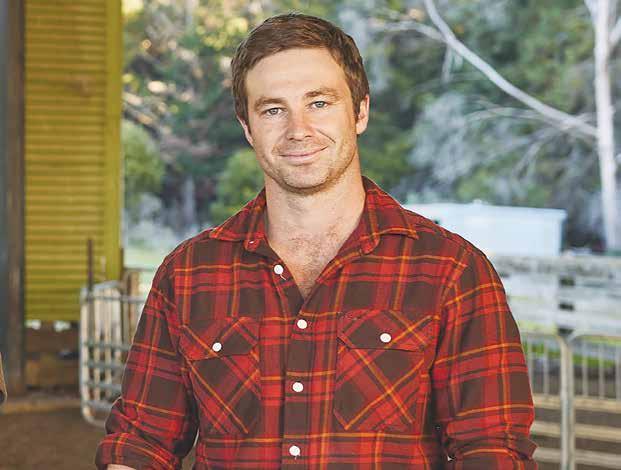
ASKED IF sheep and beef farmers are out of the woods, Federated Farmers meat and wool chair Richard Dawkins says it’s still early days.
“While there is some celebration at the higher pricing, that is coupled with cautious optimism,” he says.
“While market forecasts suggest
Westpac industry economist Paul Clark believes there is more upside to lamb prices, but gains may be limited given where inflation-adjusted prices are relative to long-term averages.
current pricing levels may hold for a season or two, farming is a cyclical industry and volatility is always part of the landscape.
“The focus now should be on making smart, forward-looking investment decisions that strengthen on-farm resilience.”
prices higher in 2025, with gains set to moderate in 2026 as output levels tick higher. “Much of that has to do with constrained US production, ongoing growth in domestic demand for beef within the US and its reliance on imports,” says Clark.
The stronger meat schedules are helping lift farmer sentiment.
Dawkins says coupled with some significant policy wins morale is clearly on the rise.
“That said, constrained production in key exporting countries, notably New Zealand, Australia and the UK, should help support prices.”
With beef prices, lower global production is expected to push beef export
Clark says that the US has been a growing export market for New Zealand. However, US tariff policy could also impact demand for lamb over the coming year.
“However, we must remain mindful of those still carrying the weight of recent tough years, and also of our colleagues in the arable sector, who are currently facing real challenges.”
@rural_news
facebook.com/ruralnews
• For Water Storage Tanks
• Adjustable levels from 50mm-2.5m
• Minimises pump operation
•Available in 20/25/32/50mm
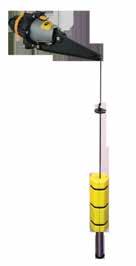
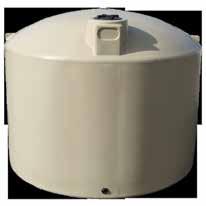

• Stainless steel bracket and Shaft
• Fits plastic and concrete tanks
• Rugged and long lasting

FORMER SPECIAL agricultural trade envoy
Mike Petersen says meat exporters are going to have to be nimble and agile to take advantage of any opportunities that may arise in the chaos of the tariff crisis.
He says for NZ farmers the improved global prices for sheep, beef and dairy products are still looking firm. He says the agri-sector is booming now and is holding the NZ economy together.
“But there is no doubt there is huge uncertainty now that wasn’t there twelve months ago,” he told Rural News
Petersen has a personal interest in horticulture as the chair of Scales Corporation. He says none of the turmoil caused by the tariff crisis is good for anyone, but horticulture is somewhat insulated because most of its exports are to markets
in the Asia Pacific region, the Middle East and Europe. But he says there are still concerns on the geopolitical front.
To the question ‘what can NZ do about the 15% tariff rate?’, the answer seems to be ‘not much but get on and do the best we can’.
Petersen says NZ’s experience as an exporter and an international trader puts us at an advantage over other countries, noting that most of our competitors’ primary production is consumed domestically, whereas 90% of ours is exported. He says we are good at exporting, are nimble, and know how to shift product around and maximise any opportunities that arise.

done to others,” he says.
Labour’s Damien O’Connor questions whether the present government strategy of keeping its head down was the right one. However, he agrees that no one knows what sort of options for change there will be in the future.
News that MFAT officials and Trade Minister Todd McClay will travel to Washington to get more details about the 15% tariff comes as no surprise.
But former Trade Minister Tim Grosser says all they doing is trying to get more details – not trying to negotiate. He says the talks will not produce an immediate change to what has happened.
In terms of what we could do, Petersen says
“In the world of trade, NZ is looked upon as one of the pioneers. People come to us to understand about trade agreements and market access and systems verifications, so we have huge respect in the world of trade. When it comes to geopolitics, we are minnows, but in the world of trade, NZ punches well above its weight,” he says.
buying aircraft from Boeing and increasing our defence spending may help.
“Who knows, maybe that’s what Donald Trump is looking for,” he says.
Petersen says the NZ approach of treating Trump respectfully and carefully is the right approach and taking an aggressive stance would not work.
“The last thing we want is to be sitting in the Oval Office while he rants and raves about the things he doesn’t like about us, which he has
TRADE MINISTER Todd McClay says the US tariff decision appears to be based on a calculation of trade deficits, with countries running a surplus with the US moved to the higher rate. He says in NZ’s case our surplus is a modest, US$500 million, and is not overly significant in the context of the US economy. He says over the past decade there have been times when the US has enjoyed a significant sur-
plus over us and overall, our trade is balanced and complementary.
McClay says he’s seeking an urgent call with the US Trade Representative to make NZ’s position clear, because the 15% tariff they have imposed risks harming exporters and consumers of both countries.
“The US currently faces an average tariff of just 0.8 per cent when exporting to NZ, far lower than what

we face into their market,” he says.
McClay says NZ has always stood for open, rules-based trade and will continue to advocate strongly for a resolution that supports our exporters and maintains the strength of our trading relationship with the United States.
Former Labour Trade Minister Damien O’Connor describes the US tariffs as a serious intervention on
global markets and the core products that the NZ primary sector exports.
He believes it may take some time for the effects of the new tariffs to hit the pockets of NZ farmers but it will have a significant impact on our meat processing plants, which he says are really squeezed financially with some not making profits.
He says everyone will have to adjust to the inevitable changes in
“And frankly I don’t think if Todd McClay had camped on the lawns of the White House in the last month it would not have made any difference to what we know now,” he says.
the market, but this will cost money. O’Connor says recent initiatives by the industry to lure consumers to NZ products are good. He points to the recent Taste Pure Nature campaign in China and Zero Carbon beef by Silver Fern Farms as examples of this.
“But this tariff disruption is no doubt going to squeeze them and the farmers over time,” he says.
– Peter Burke

A STRONGER than expected outlook for dairy has prompted one bank to lift its 2025-26 season forecast milk price by 75c to $10.25/kgMS.
BNZ’s new forecast is the highest for this season and trumps Fonterra’s forecast midpoint by 25c.
The bank’s senior economist Doug Steel believes that another season of buoyant milk prices is pencilled in. Last season’s milk price, to be finalised in in October, is set to top $10/kgMS for the first time.
Steel says their previous milk price view was built during a dip in Global Dairy Trade (GDT) prices and with expectations the New Zealand dollar would have pushed higher by now. GDT prices did fall a cumulative 7.4% from a recent peak in early May to early July.
“But changing factors like world growth expectations edging higher, weather conditions and disease affecting milk supply in parts of the

EU, rising global fertiliser prices, reports of continued milk production weakness in China, and resolution of a trade dispute between NZ and Canada collectively suggest a stronger dairy outlook than we previously anticipated,” he says.
Last week’s GDT auction saw the price index rise 0.7%. The price
for flagship whole milk powder rose 2.1% to US$4012/metric tonne.
Steel says the latest GDT auction supports the case at the margin.
“The small 0.7% lift at that event was arguably a bit stronger than it looked, given prices tend to fall at this time of year as volumes lift, and despite a headwind from
a stronger USD since the previous event,” he says.
“On our reckoning, both Fonterra’s $10 milk price forecast for the 2025/26 season and our own $10.25 view are consistent with some mild decline in GDT prices from current levels. If GDT prices don’t ease from here, a milk price a touch higher than
both forecasts could be expected.”
More broadly, he says the scope of possible outcomes for this season’s milk price remains very wide. Further improvement in global growth forecasts and demand, or tighter than expected supply, present upside risk, he says.
On the downside,
LOW CHINESE inventories could help keep whole milk powder prices up in the coming months.
According to NZX markets analyst Lewis Hoggard, Chinese inventories of WMP were up 19% month-onmonth in the most recent update for June, however, down 63% year-on-year, which continues to be a bullish sign.
“With buyers caught short in Q4 last year due to declining raw milk production, if inventories begin to fall again, then we expect there will be decent support for WMP prices around these levels over coming months.”
However, Hoggard cautions that a potential bearish counterweight to this could be increased NZ supply, as Fonterra recorded a +43% year-on-year result in June for South Island collections, although this is at the seasonal low point in the curve.
there is still plenty to fret about that could materially and abruptly alter the trajectory for prices ahead. The world growth outlook and trade environment are fragile, while geopolitical tensions don’t look like vanishing anytime soon, notes Steel.
Also, above average inflation-adjusted prices could encourage more milk from those that can increase production.
“That still feels like a question of when, not if. Dairy prices are high relative to global grain prices. For example, the
dairy price to corn price ratio is at its highest level in more than 10 years. US milk production is already pushing well above year earlier levels,” says Steel.
He says that eyes are also on the new NZ production season as it really starts to ramp up.
“It is off to a strong start. After lifting 3% last season, NZ production is assumed to lift 2% this season. Less volume than that would present some upside risk to our milk price view, at the margin, and vice versa if production is stronger.”
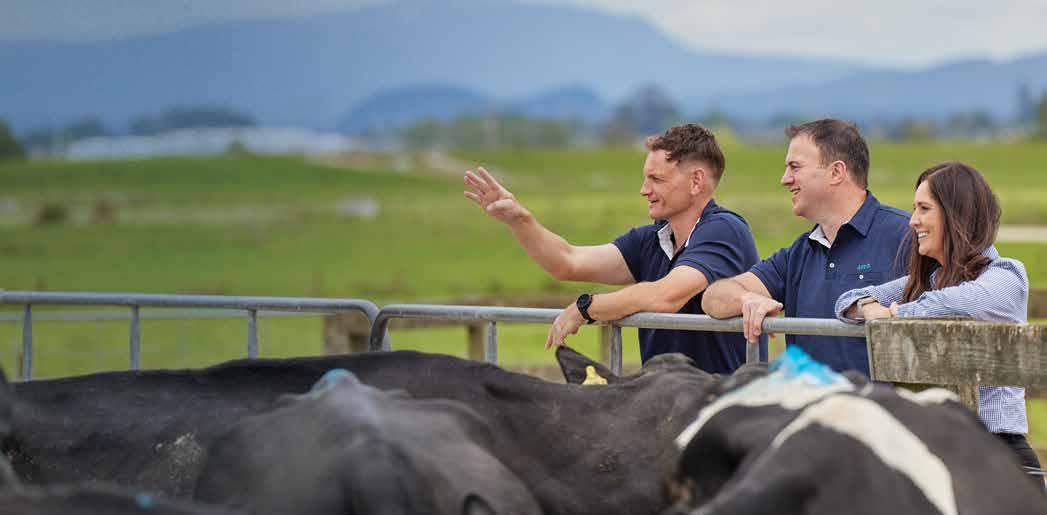
BEEF + LAMB NZ’s countrywide director roadshow arrived in Feilding last week, bringing with it ongoing positivity in the sector, an overview of the work B+LNZ does on behalf of levypayers and a proposed change on how the levy would be collected in the future.
Poorly attended, with less than a dozen farmers in the room, proba-
bly because many were up to their armpits with lambing, it began with an introductory video from Simon Quilty of Australia-based Global AgriTrends, who predicted a healthy future for beef and lamb, at least over the next 12 to 18 months.
With the US and China still at loggerheads over trade tariffs, Quilty noted that China was rebalancing its agricultural imports, and the fact that the Chinese
• DairyNZ Board of Directors
Imported Food Enterprise Regulations (CIFER) did not have an automatic renewal facility, so once a registration ran out, its non-renewal acted as a de-facto ban.
He suggested that, with effect from midAugust, more than 800 US companies would be ineligible to send product to China, while the United States Dept of Agriculture (USDA) was reporting no response for renewal information from

• DairyNZ Directors’ Remuneration Committee
Invitation for 2025 candidate nominations - four positions available
• Two farmer directors for the Board of DairyNZ Incorporated.
• Two members for the DairyNZ Directors’ Remuneration Committee. Current levy-paying dairy farmer who are also members* of DairyNZ Inc are now invited to nominate candidates to fill these four positions.
All farmers paying a levy on milksolids to DairyNZ and who are members of DairyNZ Inc are eligible to stand for election. An information pack outlining desired criteria and nomination requirements for the positions can be obtained from the Returning Officer.
Nominations must be received by the Returning Officer by 12 noon on Wednesday, 27 August 2025.
Elections
If more than the required nominations are received, a voting process will be carried out by postal voting using the STV (single transferable vote) voting method. Votes will be weighted by annual milksolids based on 2024/25 dairy season ended 31 May 2025. Voting credentials will be posted to all members on 2 October, with voting closing at noon on Tuesday, 4 November 2025.
The DairyNZ Annual Meeting will be held on Thursday, 6 November 2025. Election results will be announced at the meeting.
For further details contact the Returning Officer below.
Anthony Morton
Returning Officer – DairyNZ Incorporated
0800 666 935
iro@electionz.com

* At the Annual Meeting held on 22 October 2024, DairyNZ amended Rules 8.2 and 8.3 to align with the Incorporated Societies Act 2022 (the Act). Under these amendments, any new levy payer must actively confirm their membership to comply with the Act. All levy payers prior to 22 October 2024 are automatically deemed members under the Act.

its Chinese counterparts -all good news for NZ beef and lamb.
Elsewhere, Donald Trump was proposing a 50% tariff on Brazilian imports, apparently in retribution for perceived persecution of the country’s former president Jair Boksanaro, which Trump was calling a disgrace.
Given that Brazil’s beef imports into the US between January and May 2025 was up 118%
over the same period in 2024 at 175,063 metric tonnes, it was a major supplier. By contrast, NZ sent 79,133 metric tonnes, while Australia landed 158,000 metric tonnes. If indeed the proposed tariff did eventuate, the result would offer extensive opportunities for Australasian suppliers.
Of course, it follows that Brazil would be looking at other markets, putting pressure on existing
NZ agreements. Quilty suggested Brazil had no access to Japan or Koreaboth large beef importers - so would likely target China, who have the ability to handle imports as the US supply dried up.
Looking ahead, Quilty noted that the current global prices for beef and sheep meat was being brought about by increasing demand and tightening supply.
He summed up with the comment, “the future looks outstanding” and a prediction looking forward: Based on fewer calves caused by drought and fewer calves being reared in the last two years because of poor margins, he noted that with prime steers currently sitting at $8, margins might soften slightly over the next 6 months, but more likely hold until the middle of 2026. In the case of NZ lamb, he sug-
NEW ZEALAND avocado growers have received a major boost by securing a collective FernMark Licence for their exports.
The FernMark - New Zealand’s official country of origin markis awarded by the Government to products that meet strict standards of authenticity, quality, and governance. The FernMark is recognised by nearly half of consumers in key export markets, with 44% of them more likely to purchase products
bearing the mark. For New Zealand avocados, it offers a powerful accreditation - one that aligns with the industry’s values of sustainability, ethical growing practices, and premium quality.
While individual avocado exporters have held licences in the past, this new coalition licence represents a unified front, reinforcing the industry’s commitment to collaboration and excellence.
Trade Minister Todd McClay
gested that prices might track as high as $10.50 by July 2026.
Following an explanation of B+LNZ ‘s activities, Andrew Stewart, farmer director-Western North Island and a Marton sheep and beef farmer, raised a potential change in the method of levy gathering, changing from head counts to a policy based on carcase weights.
Currently, headage payments for mutton and lamb are $0.75, with beef charged at $5.20. The proposed changes would see suggested rates at $0.03/kg for mutton, $0.04/kg for lamb and $0.02/kg for beef. Stewart suggested the proposed change would more closely align the amount of levy paid to the value of the carcase and futureproof alignment of levy to production, to some degree.
says avocado growers and exporters can be proud their produce is now carrying the official FernMark, demonstrating quality and trust.
Brad Siebert, chief executive of NZ Avocado, says the coalition licence reflects the industry’s shared vision.
“It’s a powerful example of how working collectively raises the bar for quality and builds even greater trust in New Zealand avocados across international markets.”

FERTILISER CO-OPER-
ATIVE Ravensdown is working on delivering a rebate for its farmer shareholders next year –the first in four years.
Chief executive Garry Diack says that while farmers recognise the benefits of the co-op they get through pricing, they also want a good capital return on their investments.
“At the end of the day, they want to see good capital return on their investments, and we are working to deliver a rebate next year,” he told Rural News.
For year ending May 31, 2025, Ravensdown delivered an operating profit before impairments, tax and one-off adjustments of $13 million. After impairments
and one-off adjustments, but before tax, the cooperative reported a net loss of $2 million.
The closure of manufacturing in Dunedin, the divestment of five lime assets, and the sale of C-Dax resulted in impairments of $9m – an outcome of the strategy to re-size the business to meet the market.
“The co-operative’s impairments over this past financial year reflect that we are a business adapting to changing market conditions,” says Diack.
“While the closure of manufacturing in Dunedin has had a significant impact on our financial result this year, ongoing we will realise the benefit of reduced operating and capital maintenance costs.”
Ravensdown is hitting the “pause button” on
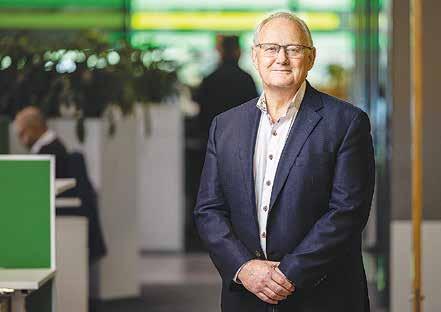
further divestments but further asset sales aren’t being ruled out.
“We’re hitting the pause button on asset sales and sitting on what we’ve got, but it’s a pause and not the end of asset sales,” says Diack.
The co-op is also implementing a targeted programme of projects to
enhance operational efficiency and support customers to ‘do more with less’ nutrients.
“Farmers are adapting to modern technology around variable nutrient placement. Our investments in our digital interface are keeping pace with the release of HawkEye Pro, and we continue
to invest in technology and innovation through Agnition.”
The co-op again worked hard to deliver competitive pricing throughout the year and focused on keeping prices lower while farmer customers emerge from the economic downturn.
“The co-operative has
absorbed increasing international fertiliser prices and rising input costs to delay passing them on to customers, even as our own margins have come under pressure,” says Diack.
Flat year-on-year revenue of $764 million, and volumes up 71,000 tonnes on the previous financial year to 962,000 tonnes, resulted in lower margins.
Despite the net loss, Ravensdown retains a stable funding base –building on improvements achieved in the previous two years.
Inventories at year-end reduced further by $22 million to $128 million with debt reduced by 67% to $26 million.
Diack says trading wise it has done “okay”.
“The impairments took us to a loss, but we’ve got the business in
good shape. Of course, trading wise we wanted better results.”
Ravensdown chair
Bruce Wills says the cooperative’s underlying performance continued to ensure a stable funding base that saw the balance sheet equity ratio lift to 80%, up 1% on the previous financial year.
Wills noted that the difficult trading environment didn’t allow payment of a shareholder rebate.
“In this environment, it has been prudent to continue our conservative approach to capital expenditure and conserve funds.
“Although fair pricing was at the expense of a rebate, the business was able to leverage the strength of its balance sheet to ensure we’re well positioned for any market upturn.”

$85,362, the 3rd-highest in NZ.
THE TARANAKI region is enjoying one of the highest gross domestic product (GDP) per capita figures in New Zealand, thanks to high farmgate dairy prices.
A new report out last week shows that the region earned $3.6 billion in exports in 2024 –largely from dairy, oil and gas, and meat products –but in recent years there has been a significant shift in where its export earnings come from.
In 2008, oil and gas exports earned the region twice as much as dairy, but in 2024 that has reversed, with dairy now earning three times as much as oil and gas.
According to the report, in the year to March 2024, Taranaki’s GDP per capita was
Within the regional GDP by industry, the broad Forestry, Fishing, Mining, Electricity/Gas category, which is dominated by oil and gas extraction, was $2.1b, far above agriculture at $848m as of March 2024.
This reflects that oil and gas extraction has historically contributed more to output than dairy farming.
However, export values tell a different story: by 2024 dairy products became the top earner ($1.8b) with oil and gas next ($610m), reversing earlier patterns when oil and gas were larger.
In summary, oil and gas has long driven Taranaki’s high GDP, but dairy’s export growth in recent years has raised its share, due largely to an

appreciating milk solids price.
The report, the first in a series from the team at data and insights company Dot Loves Data and ANZ, aims to provide an insightful deep dive into some of the areas that make the region tick.
ANZ New Zealand chief economist Sharon Zollner says the report highlights the value of
Taranaki’s strong manufacturing base and its long-standing agricultural backbone.
“This diversity helps the region navigate the ups and downs of economic, commodity and policy cycles,” she says.
ANZ New Zealand managing director of business and agri Lorraine Mapu says Taranaki’s economy is
undergoing a transformation, with manufacturing emerging as a key driver of future growth and resilience.
“As a bank deeply embedded in regional New Zealand, we see firsthand the ambition and capability of businesses in Taranaki.
“Manufacturing companies - like New Plymouth-based engi-

neered timber producer Taranakipine - are investing heavily in innovation and new technology. This has boosted productivity, given these companies a competitive edge in the global market and primed them for growth.”
Mapu says productivity gains and record-high prices have also enabled dairy farmers to make a substantial and grow-
ing contribution in recent years.
“By diversifying product offerings and markets, with a focus on developing high-value exports, these producers and manufacturers have played a key role in supporting our economy.”
However, she says to fully realise the potential of Taranaki’s transitioning economy, coordinated action at pace is needed across industry, government, and the financial sector.
“The region’s strong manufacturing base, skilled workforce, ability to think differently and appetite for land use diversification offer a powerful platform for growth. With the right support, these businesses can lead the way in building a more diverse, resilient and globally connected economy.”
We’re proudly partnering with Farmstrong to discuss the little things that bring us happiness, like this warm jersey on a chilly day or the simple pleasure of a coffee break to connect with others. Farmstrong’s 5 Ways to Wellbeing are simple, daily habits to help you stay well on farm. Receive a FREE * NZ wool jersey with qualifying purchases of ECLIPSE® products. For more info talk to your vet or visit: futureproducers.co.nz


HAWKE’S BAY’S loss is Canterbury’s gain with the opening of a new state-of-the-art soil testing laboratory for the Ravensdown subsidiary ARL (Analytical Research Laboratories) at Rolleston.
The new facility replaces ARL’s previous site in Hawke’s Bay, which was destroyed during Cyclone Gabrielle in 2023. For the last two years the lab has been operating from a temporary site in Hastings.
ARL says the new lab is closer to key research partners and core farming communities. Attendees at the recent official opening were told that 70% of its work now comes from the South Island.
Ravensdown general manager of innovation, Jasper van Halder, said the decision to bring the lab south was made only last year.
“We found a location, designed the lab and started building in November 2024.
“That’s right. Just 10 months ago, this shiny new facility was an empty shell, and this [upper] floor didn’t even exist. Now, we’re set up for growth and we’re picking up where we left off.”
He said the new lab was not just about rebuilding but about strengthening the systems that support farmers, researchers, and land managers across the country.”
The new lab features extensive robotics including five custom-built machines developed by ARL’s team.
With seven staff relocated from the original team, the lab employs 30 people and currently processes around 80,000 samples per year, mostly soil. It is expected to be able to double that in soil samples alone while expanding testing capacity for plant, crops, and feed samples.
General manager Suzan Horst said that accurate, timely data was essential.
“It allows farmers to apply nutrients only where needed, which is good for the environment and increases crop production and pasture growth.”
Selwyn MP and Associate Minister for Agriculture Nicola Grigg joined Ravensdown chief executive Garry Diack in cutting the cake to declare the new facility officially open.
Grigg called the new lab an exciting addition to Selwyn’s agricultural economy.
“Soil science and plant science is the absolute foundation for the success of our agriculture sector.
“You will all have observed that our agricultural exports just about hit 60 billion dollars in the last financial year. That is an extraordinary result given this economy is just clawing its way out of a deeper recession than we went through during the GFC.”
Grigg said a new generation of younger farmers understands that offshore markets are deeply interested in the provenance of their food.
“We know this country is only going to get rich by continuing to grow our agricultural exports by continuing to engage in those offshore markets and continuing to have a science-based provenance story.
“As much as we can talk about how wonderful and green our country is and what lovely fresh air we have, it has to be science and evidentialbased.”
While acknowledging Hawke’s Bay’s hardship from Cyclone Gabrielle and its resilience in the recovery, Selwyn deputy mayor Malcolm Lyall called the move to Rolleston “a major win for agriculture in our district”.
“2.8 billion dollars of
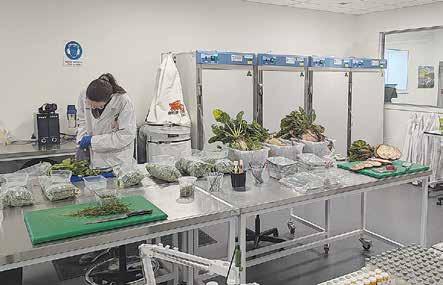


NORTH
pig farmer Steve Sterne has been honoured with NZ Pork’s Outstanding Contribution Award, recognising his 27 years of dedication to excellence in the sector.
Sterne and daughter Holly run Patoa Farms at Hawarden, New Zealand’s largest pig farming operation.
He bought the land bordering the Hurunui River with co-founder Jens Ravn in 1998.
Following Jens’ retirement in 2013, Steve Sterne continued to farm with a management team in place.
Patoa sows roam free range with small strawbased shelters in large paddocks for farrowing. Pigs being finished
“The award is for an individual who has made a sustained contribution to the pig industry.”
The system, which sees the farm produce about 95,000 pigs a year, allows for the used straw bedding and manure to be recycled and used on other farms throughout the Canterbury region.
Composted manure is used on the farm’s crop ping land or sold to other farmers.
utive Brent Kleiss said

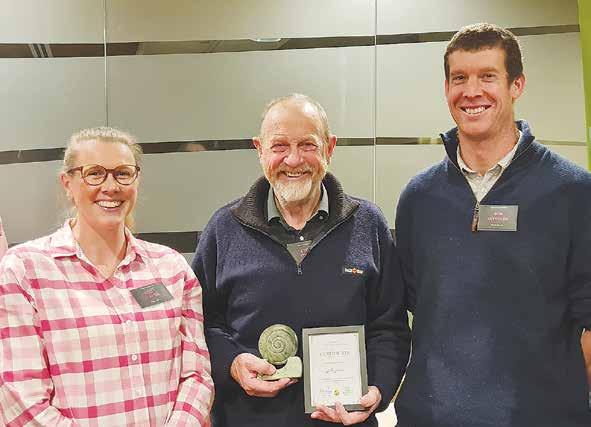

educating the next generation of skilled workers for the sector.
“Patoa employs more than 50 people, contributing around $4 million in wages to the local economy.
“It is also an approved provider of the Primary ITO New Zealand Certificate in Pork Production for levels 3 and 4.”
Sterne was presented with the award at NZ Pork’s annual conference in Christchurch last month.




a sustained contribution to the pig industry.
“The Patoa Farms
operation is the epitome of the circular economy. Steve is also passionate
about the farm, contributing to the local community and encouraging and
Delegates at the conference also expressed their thanks to former MP and Southland farmer Eric Roy, who last week stepped down as chair of NZ Pork, having taken on the role in 2019. A new chair will be elected later this month.
@rural_news
facebook.com/ruralnews
THE GOVERNMENT has appointed three new members to the board of state farmer Landcorp Farming Ltd, trading as Pāmu.
appointment, says Pāmu.
NZ,” Rae says.


Angela Dixon, Stu Husband, and Brent Lawgun begin serving a three-year term from 1 August
Dixon is a seasoned consultant and finance specialist with extensive governance experience. Her background spans financial performance oversight, capital asset management, and digital innovation.
Husband is a dairy farm owner and operator, iwi negotiator, and former Waikato Regional Councillor. His strong connection with farmers and belief in Landcorp’s role as a pathway to farm ownership for rangatahi underpin his
Lawgun has over 30 years of business experience, with a focus on private equity, funds management, and board governance. His pragmatic approach to aligning governance with performance and culture makes him a valuable addition to the board.
Chair John Rae says each new appointee brings a unique blend of expertise, insight, and leadership “that will be invaluable as we continue to deliver on our strategic priorities and crown expectations”.
“Their appointments mark a significant step forward in strengthening Pāmu governance capability and ensuring the board reflects the breadth of experience needed to navigate the future of farming in
Two months ago, Pāmu was issued a “please explain” letter by its shareholder, the Government, seeking answers on how it intends to strengthen its finances and focus on its core roles.
State Owned Enterprises Minister Simeon Brown wrote to the board expressing disappointment and concern at the state-owned farming company’s “failure to make progress in improving its performance”.
He cited as examples of underperformance and measures needing to be addressed, improving the five-year average of a 2.6% return on shareholder’s funds, and its failure to meet its cost of equity for at least a decade.








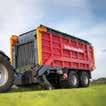

A CHARITY that connects young people with farmers for two years of on-farm training is reporting a record 150 student applications for its 2026 intake.
However, with demand exceeding placements by nearly 90%, Growing Future Farmers (GFF) is now calling on experienced farmers across King Country, Otago and Canterbury to come on board as farm trainers.
GFF chief executive Wendy Paul says the record applications are a clear sign that young people are embracing farming as a meaningful and rewarding career path.
“These aren’t just numbers on a spreadsheet; they represent young people who are choosing agriculture as their career path, at a time when some are questioning the industry’s future,” says Paul.
She adds that with strong demand from motivated students aged 16–21, many of whom are making farming their first choice, the call for more trainers is urgent.
“If you’ve ever thought about your legacy and how your knowledge and experience could benefit the next generation, this is your moment,” she is telling farmers.
Founded by Dan and Tam Jex-Blake from Man-

gapoike, GFF connects young people with experienced farmers to learn on the land. Students gain real skills, confidence and resilience through handson farm experience, men-
toring, and structured support. Over two years, they develop essential livestock and agribusiness skills while contributing to daily farm operations
four days a week, supported by formal learning one day a week.
Paul says GFF farm trainers play a vital role in this journey, not only by teaching practical skills but also by helping shape future leaders in agriculture.
“When you become a farm trainer, you’re investing in the future of New Zealand agriculture. You’re passing on your knowledge, building capability in the sector, and contributing to the sustainability of our industry,” says Paul.
“We’d love more farm trainers across New Zealand, but right now, we’re particularly seeking farm trainers in Canterbury,
King Country, and Otago. These regions have strong student interest but limited training placements. Every farm trainer we can add in these areas means another young person gets the opportunity to build a career in agriculture.”
She says the benefits of training go both ways. Many farmers who take on GFF students say they gain fresh perspectives, renewed motivation, and stronger team culture on-farm. GFF offers full support to its trainers, including dedicated Student Success Advisors, and substantial help with admin and training coordination.
“The young people
applying to our programme are ready to work and eager to learn –they’re choosing agriculture as their first career choice, not as a fallback.
“If you’ve ever wanted to make a real impact in agriculture, this is your chance. We have a proven programme that works. We have the support systems in place. What we need now is you.”
GFF is inviting farmers to get in touch for “a no-pressure chat” to learn more about becoming a trainer.
More information is available at www.growingfuturefarmers.co.nz/farmtrainers.
@rural_news
facebook.com/ruralnews










NOTHING IT seems can be done in the short term to get Donald Trump to change his mind about removing the unfair 15% tariffs that he’s imposed on New Zealand exports to the US.
Just like small fish, we have got caught up in the tidal rush to make America great, by making everyone else pay more at the high altar of the US president.
It seems it matters not that in the past, from time to time, the US enjoyed trade surpluses over us. It seems that friend and foe have been treated the same in the great chaotic tariff lottery.
The money that the US will collect by way of tariffs from NZ is minuscule, akin to a pimple on an elephant’s hide in terms of its impact on their economy. Yet to us, this across-the-board approach without any serious consultation could have significant impacts on our people and our economy – hardly a sign of friendship.
The trouble is, as trade experts Tim Grosser and Mike Petersen have noted, the 15% may just be the beginning. Will the US farm lobby pressure Trump to take more actions against our exports, will there be more tariffs, will future US administrations repeal these tariffs and will there ever be an opportunity to get the US to backtrack on what they have done?
In the last few months, things have been looking up for our agri-sector. Dairy and horticulture had great years with the latter recovering well from successive adverse weather events and there has been positive news for sheep and beef farmers. There were still fears about the impacts of wars in the Middle East and of course Ukraine, but suddenly we have been hit with another curve ball which is beyond our control.
However, the world needs food and no one is better placed than NZ to supply safe and quality products. One would hope there’s not much impact on our export receipts.
And we also hope that, once again, our politicians, trade officials and exporters will bat for us and navigate us through yet another crisis.
GOT SOMETHING on your mind about the latest issues affecting our farming industry? Put your pen to paper or your fingers to your keyboard, and let our readers know what you think. Contact us by either post or email. Don’t forget to put your name and address. Note: Letters may be edited.
post to: Letter to the Editor PO Box 331100 Takapuna , Auckland 0740. or Email: editor@ruralnews.co.nz
HEAD OFFICE POSTAL ADDRESS: PO Box 331100, Takapuna, Auckland 0740
Phone 09-307 0399
PUBLISHER: Brian Hight Ph 09 307 0399
GENERAL MANAGER: Adam Fricker Ph 021-842 226
EDITOR: Sudesh Kissun Ph 021-963 177 sudeshk@ruralnews.co.nz
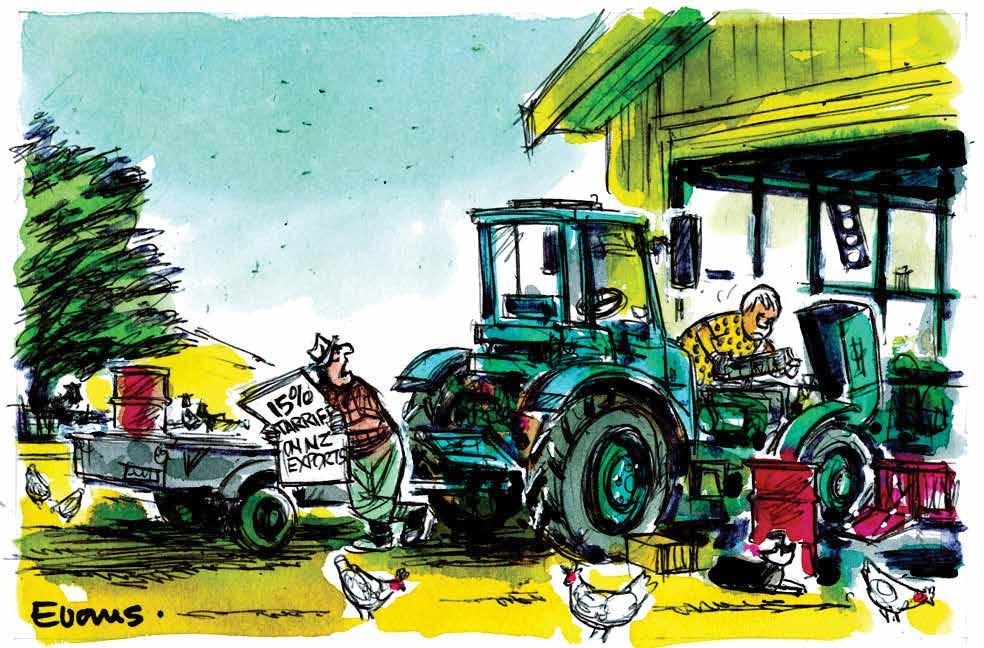
WHILE THE destruction of NZ’s oil and gas industry by Jacinda Ardern’s band of merry vandals was virtue signalling on a heroic scale – producing no environmental benefit whatsoever – the politician vowing to make that industry whole again, Shane Jones, is not above a bit of virtue signalling of his own. The Hound applauds the intent of undoing the legislative vandalism, and Jones for admitting his part in it, having been part of that government. However, with the current Opposition scaring the market by promising to undo any changes Jones makes now, Jones himself will know that international investors won’t touch us with a barge pole; the high costs and long timeframes require a country to have a stable, long-term policy on these things. With the LabourGreens-Māori Party firmly against it, Jones will struggle to get anyone to “drill baby, drill!”

THE SUDDEN departure of Jim Ward, manager of Molesworth Station for 24 years, highlighted some major dysfunction in the way the conservation estate is managed in this country – the biggest problem, as the Hound sees it, being idealogues who harp on about “taonga” and use all means possible to block sensible commercial operations on conservation land. The word on Ward’s departure is that he was unhappy with DoC’s lack of action on Molesworth’s Wilding Pine problem, and the government considering planting pines there, a plan that’s “under review”. If the purists stop Molesworth being run as a working farm, it will become a breeding ground for weeds and pests, as noted by its neighbours. Contrary to the bleating from Forest & Bird etc, changes that ease the way for sensible concessions on DoC land can’t come quick enough!
EDITOR-AT-LARGE: Peter Burke Ph 021 224 2184 peterb@ruralnews.co.nz
REPORTERS: Nigel Malthus Ph 021-164 4258
Leo Argent
MACHINERY EDITOR: Mark Daniel Ph 021 906 723 markd@ruralnews.co.nz
PRODUCTION: David Ferguson Ph 027 272 5372 davef@ruralnews.co.nz
Becky Williams Ph 021 100 4381 beckyw@ruralnews.co.nz
THERE’S AN infamous term coined by a US general during the Vietnam war, specifically in reference to the battle of Ben Tre: “We had to burn the village to save it.” A mate of yours truly reckons a similar approach is being taken by the Government with its ETS policy, which, to offset the country’s combined carbon emissions (including the often understated urban-industrial and transport contribution), is covering good productive sheep and beef country in more bloody pine trees. The downsides of this rampant afforestation have been well covered but remain true – jobs will go and the flow of money through affected rural communities will dry up. And yet it continues. Crucially, ‘offsetting’ does nothing to reduce the actual emissions in the first place! As the Hound’s old mate opines, sinking our country won’t save our planet.
AUCKLAND SALES CONTACT: Stephen Pollard Ph 021 963 166 stephenp@ruralnews.co.nz
WAIKATO & WELLINGTON SALES
CONTACT: Lisa Wise Ph 027 369 9218 lisaw@ruralnews.co.nz
Want to share your opinion or gossip with the Hound? Send your emails to: hound@ruralnews.co.nz
YOUR OLD mate reckons townie Brooke van Velden, the Minister of Workplace (or is it Woke Place) Relations is now showing how underemployed she is as a minister by initiating an investigation into whether young children should be banned from collecting eggs on farms and feeding animals. She fears it could be ‘working’, which is against the law. This must rank as one of the most stupid, incomprehensible utterances of a Minister of the Crown in decades. Kids love collecting eggs, feeding their pet lambs and rearing calves for school calf days. This gets them away from screens, they see real life and have fun. This mutt can hardly imagine what her parliamentary colleagues who have a rural background think. Surely the focus should be on less trivial things like getting the economy right, hospital waiting lists down and finding more rural doctors!
SOUTH ISLAND SALES CONTACT: Kaye Sutherland Ph 021 221 1994 kayes@ruralnews.co.nz
DIGITAL STRATEGIST: Jessica Marshall Ph 021 0232 6446
I WAS quite casually browsing through some news headlines recently, when one of them really caught my attention.
So, I clicked on for a closer look. I think it was these words in the mix‘Thank A Farmer’ – that first really piqued my interest.
It highlighted a group across the creek that I had not heard of previously - Farm Angels. I had wondered from time to time how our Aussie mates in the rural sector were managing over there. Like, what government stuff were they getting shoved down their throats, for starters?
After a little research, I learned that Drought Angels were first formed in 2014. The effects of an ongoing drought in Queensland at the time brought two people together who decided to do something practical to bring help. They had heard that some struggling farmers were getting so hammered they could no longer put food on the table for their own families.
Since that small beginning back then, they took a name change and are now known as the Farm Angels. And they now respond to any rural crisis or emergency, not just their droughts. They have expanded to being Australia wide, touching something like 1300 rural communities!
The Thank A Farmer

thing that first caught my attention was about holding events to help urban people appreciate just how much of what they eat, actually comes from a farm. I think some folks still think their milk comes from a supermarket! What’s a cow got to do with any of it?
In my browsing, I came across what I would call a good fun quote, so I will pop this in here for you. Inspirational speaker Brenda Schoepp apparently gets the credit for this one: “My grandfather used to say that once in your life you need a doctor, a lawyer, a policeman, and a preacher. But every day, three times a day, you need a farmer.”
I think it’s all good humour in favour of us farmers, even if it stretches the truth a little about the other guys mentioned! For us, we have definitely needed a doctor more than just the once… we have four children for starters. I have birthed lots of calves, and many lambs too, but my wife insisted we call up the family doctor
for those four! All my ‘mid-wife’ experiences didn’t impress her for a moment.
Now sadly, I also learned that over in Aussie, every ten days they were losing a farmer, mostly good rural blokes, to suicide. Sad indeed.
Farm Angels are doing what they can, as I am
“You don’t have to walk the hard yards all alone.”
sure others are also, to try and reach these people in time. Or, if they are too late, they offer
help and support for the affected families.
Now for a quote from off the Farm Angels page: “Our mission is to ensure our farmers never feel alone.” You just have to salute that, don’t you! Yep, help is available, you are not alone. Over here we have support groups, like the Rural
Support Trust, to name just the one. They can be easily contacted. Then there is family, or good friends, who often stepup when those greater levels of support are needed.
And there are people like me, Chaplains, who, in my case, are just one email away. You don’t
have to walk the hard yards all alone.
And yes, I can get you introduced to that true friend like no other, as well. As He said, “I will never leave you or forsake you.”
God bless.
To contact
Colin: farmerschaplain@ ruralnews.co.nz






THE FUTURE of New Zealand’s agricultural sector grew a little brighter, with the South Island Agricultural Field Days (SIAFD) now accepting applications for its scholarships through Lincoln University, offering $10,500 to up to six exceptional students who are poised to become the next leaders in the primary industries. With applications closing on October 31, SIAFD has broadened its scholarship scope for 2025. Up to three scholarships will be awarded annually: one earmarked for a member of the Christchurch District of New Zealand Young Farmers (NZYF); one for any other NZYF affiliate from across the region; and newly introduced last year, a scholarship available to a nonNZYF member studying full-time at Lincoln University.
Daniel Schat, an executive member of SIAFD said this isn’t just about giving financial support, it’s about backing the drive and determination of the people who’ll be working in the agricultural industry in the future.
Last year’s recipients, Cameron

Brans, Jessica Quinlan, Jorja Weld, Claire Donelley, Georgia Higinbottom and Cameron Beck, all exemplify academic excellence and promise within their communities. Their potential contributions go beyond mere accolades as they prepare to tackle challenges facing modern agriculture head-on.
“Backing education now means
we’ll have smart, practical problemsolvers for whatever comes next,” said Schat. “We’re not just sharing knowledge; we’re helping grow the kind of wisdom that works across every part of New Zealand’s farming landscape.”
The latest step aligns seamlessly with SIAFD’s enduring mission embedded in its constitution: fostering educational growth alongside personal
skill development crucial for anyone embarking on or advancing within farming vocations throughout New Zealand.
To apply for the scholarship visit https://www.lincoln.ac.nz/study/ scholarships/search-scholarships/ south-island-agricultural-field-daysinc-scholarships/ Visit www.siafd. co.nz for more information.

THE GOVERNMENT’S climate plan to offset urban industries carbon emissions will, according to the climate change commissions report’, see 700,000 hectares of sheep and beef land and 100,000ha of dairy land planted in pine trees by 2070.
The job losses will economically devastate and gut rural communities. The loss of people, wages and salaries economically cripple many rural towns, business will shut, with the loss of many export-based processing works. It will lead to balance of payments deficits and increased borrowings.
In a country where the Government owns 50% of the land, much of which is simply barren, wasteland growing tussock, matagouri, thyme and breeding rabbits, surely this should be the sort of land we could grow trees on?
Sinking our country won’t save our planet.
Dave Stanton Geraldine
Questar with Inatreq active offers a unique mode of action for persistent curative and protective control against all Septoria strains.
Using our patented i-Q4 formulation, it provides near 100% leaf coverage and high flexibility in application, delivering robust, market-leading protection so you can secure your yield and the future of your farm.


NEW ZEALAND Apples and Pears annual conference was a success with delegates and exhibitors alike making the most of three days of exhibitions, tours, insightful discussions, valuable networking and thoughtful presentations.
More than 300 people attended the annual EXPO 2025 two weeks ago at the Trafalgar Centre in Nelson, which ran over three days.
This year’s annual summit took on a new approach, with enhanced networking opportunities and more trade stands than ever before.
The annual event was designed to reflect the challenges and opportunities facing the apple and pear industry and also reflects the industry’s ongoing commitment to building a sustainable, productive, and inclusive food sector, said NZAPI chief executive Karen Morrish.
“The conference was a resounding success, with growers and industry thoroughly enjoying the opportunity to reflect and catch up. What’s more, while we were always going to be in the Nelson-Tasman region in 2025, it was timelier than ever to be there.
“The region’s recent weather events, and the resulting impact on growers, highlighted once again the realities of climate challenges on the sector,” she said.
“Reaching $1 billion in orchard gate revenue for the first time at the end of 2024 was a major milestone for our sector and one we have been keen to celebrate.
However, now to turn towards our goal of becoming a sustainable $2 billion industry by 2035.
Our six breakout sessions were selected with this mind – an eye to the

future but feet firmly on the ground.”
Each of the six breakout sessions were highly attended with standing room only for many. Highlights included:
A thoughtful presentation from Bruno Simpson, chief executive of Waimea Group, who shared lessons learned from the construction of the Waimea Dam.
Hawke’s Bay delegates paid close attend particularly as the northern region investigates water storage options of its own.
The discussion between industries leaders about what they have learned from international trade delegates, what really goes on behind the scenes and how to calculate the value of these, often costly and tiring, pieces of work.
Mark Piper, Transition CEO, Bioeconomy Science Institute, told audience members that “when New Zealand shows up together, we are at our best”.
In his presentation, former Trade Minister Tim Groser’s steeled the industry for changes ahead and shared his thoughts on the future market access opportunities for the industry.
Grosser, who called the pipfruit industry the “poster child for New Zealand business” due to its productivity and export figures, reminded those in the room that the “devil will always be in the detail” as the world’s market resettle from recent challenges.
KPMG gave delegates a sneak peek into their sector market insights which reviewed comprehensive analysis and sizing of eight key markets where
potential for growth should be harnessed by exporters.
Mike Casey captured many minds with his presentation on electric sustainability, solar power and how both these things can help Kiwi farmers and households save money and the environment.
Craig Petersen’s presentation was about what’s new in post-harvest technology and how it can meet the future needs of market access.
NZAPI has thanked sponsors Bioeconomy Science Institute Plant & food Research, Grochem, Bayer, Fruitfed Supplies, Horticentre Charitable Trust, Landkind, T&G Global, Horticentre TasmanCrop, 5+ A Day, Farmlands Horticulture, Hawk, Hill Labs, Prevar and Syngenta.
Richard Hill was awarded the 2025 Industry Contribution Award at the New Zealand Apples and Pears Conference in Nelson recently.
Hill was recognised as a grower in his own right, running his own successful family enterprise, and also for his grower and post-harvest roles for some of the sector’s largest companies, as well as serving on industry boards and committees.
NZAPI board member Andrew Common, who delivered the citation for the award, says Hill was someone who had shaped the careers of many individuals and helped ensure the performance of some of the sector’s largest integrated companies.
“Throughout his career, and more recently in his time with Mr Apple, he has been instrumental in fostering and developing the careers of many young and aspiring growers. Many of today’s orchard managers have him to thank for assisting in building their knowledge and capability – a legacy that will continue for many years to come,” said Common.
“On top of all this, anyone who has ever met him or had the privilege of working alongside him, will attest; he is someone you can always count on. He is someone who will always do the right thing. But most importantly, he is just a really, really good guy.”
The NZAPI Industry Contribution Award is awarded to a new recipient each year at the NZAPI annual conference.

THREE NEW directors are joining Horticulture New Zealand’s board from this month.
Simon Cook, Dermott
Malley and Shaun Vickers take up their positions following director elections at HortNZ’s annual general meeting in Wellington on August 26.
Cook grows kiwifruit and avocados in Te Puke, in the Bay of Plenty. He is chair of Kiwifruit Vine Health (KVH), the kiwifruit industry’s biosecurity body.
Malley has extensive experience in the commercial and horticultural sectors. He is currently chair of Onyx Capital

Ltd, a Northland-based integrated horticultural enterprise that pio-
neered advanced growing techniques in kiwifruit, kiwiberries, and hydro-










ponic berryfruit production, and is deputy chair of Kiwifruit Vine Health.
Vickers, a past winner of the national Young Grower of the Year competition, is currently general manager clients, orchards and business development at Apata Group. He leads several business units, including Apata GROW, managing over 530 hectares of kiwifruit orchards and developing more than 250 hectares across three regions.
He also has a shareholding in a 14-hectare orchard near Edgecumbe.
HortNZ chair Bernadine Guilleux says the new directors bring a valuable mix of governance experience, operational expertise and sector insight.
“Growers have had the opportunity to select leaders who will make key decisions on behalf of their industry good body, and I’m confident that they will work in the interests of all growers.
“Succession at the governance level helps ensure HortNZ remains future-focused and effective in its advocacy. We’re looking forward to the contribution each new director will bring to the board table.”
Guilleux also acknowledged the significant contribution of Barry O’Neil, Hugh Ritchie and Kathryn de Bruin, who are stepping down from the board this year.
“Barry and Hugh have each completed their
maximum terms, and we thank them for their service, particularly through a period of enormous change and challenge for the horticulture sector. Their leadership, insight and commitment to growers have been invaluable,” Guilleux says.
“Kathryn brought a thoughtful and practical voice to the table, and we are grateful for the time, energy and expertise she contributed, in particular, her accountancy experience.”
TO ASSIST the flower industry in reducing waste and drive up demand, Wonky Box has partnered with Burwood to create Wonky Flowers.
The new service was launched in June and Angus Simms, Wonky Box co-founder, says that now is the perfect time for the service.
He says that in the past few years, New Zealand’s local flower industry has shrunk.
“Many small-to-medium growers have exited the market, and only a handful remain,” he told Rural News. “Those still operating are often facing very tight margins and considerable risk.”
According to Simms, most flowers grown within New Zealand are sold on the open market, meaning there is not always consistent or fair returns for those growers.
“To meet unpredictable demand, the few remaining growers are forced to overproduce, which inevitably leads to waste when some of that stock goes unsold,” he adds.
Simms says Wonky Flowers has been designed as a direct-to-

consumer channel to tackle those issues head on.
“By offering a guaranteed outlet for surplus and cosmetically imperfect stems, we’re helping growers reduce their risk and recover more value from what they grow,” he says.
“At the same time, consumers are becoming more conscious, they want to support local, fresh, and sustainable options.
“We’ve found that customers are keen to support other areas of production where waste is a hidden issue.”
Simms says that while there is less available data around floral waste compared to food waste,
conversations with growers had revealed that it is a “very real and often overlooked issue”.
“Flowers are perishable and time sensitive,” he says. “Once they’ve missed the market window, there’s no going back. It’s not just lost income, but wasted water, labour, and energy.
“Wonky Flowers aims to change that by creating a reliable channel for these blooms to be enjoyed and appreciated.”
Wonky Flowers is available to Wonky Box subscribers now. The service costs $52 plus delivery for up to 17 seasonal stems from 4-5 varieties.



Mark Daniel markd@ruralnews.co.nz
Awards at June’s National Fieldays showcased several new ideas, alongside previous entries that had reached commercial reality.
As had become the norm, the Agri-Business Class at St Paul’s Collegiate School in Hamilton were there with several teams, but 2025 was the time for girl power, with the young ladies of KiwiPrune named as winners of the Young Innovators of the Year Award, taking home a $2000 cheque.
The purpose of the KiwiPrune is to simplify the labour-intensive task of removing the plastic clips used in securing the kiwifruit vine as part of the growing process. The clips sit on the wires that run along the T-bar trellises that hold up kiwifruit vines in an orchard. Offering benefits of improved productivity, reduced strain, and enhanced sustainability; the latter achieved by allowing growers to reuse the clips in future crops.
The team is made up of Courtney Malloy, Maddy Anderson, Libby Meridith and Casey Purves, all year-13 boarders at St Paul’s. One of the
co-creators, Courtney, had grown up on orchards, so had first-hand experience at having to manually remove the clips while working the vines during the school holidays.
The design is taken from a normal wire cutter, modifieds to create the KiwiPrune. Other members of their group took the design to one of their parents who was an engineer, who created three prototypes, from which the team selected their winning entry.
“Usually, people must take the clips off via manipulation with their hands. There are thousands of them and it’s a bit of a pain,” co-creator Maddy Anderson said.
“KiwiPrune removes the clips without damaging the vine or the wire. It also has a serrated side to cut through ties.”
Maddy goes on to explain that they came up with the idea to make it easier for the growers and their workers, who quickly tired and had many problems removing older clips that became hard and brittle.
Having received lots of interest, the team plans to look at whether it can be used or modified for other industries, such as viticulture.
Head judge Jenny Cameron said the judges saw

significant potential for use in kiwifruit orchards both in NZ and overseas, as well as in other hor-
ticulture and viticulture applications.
Visit www.kiwiprune. com


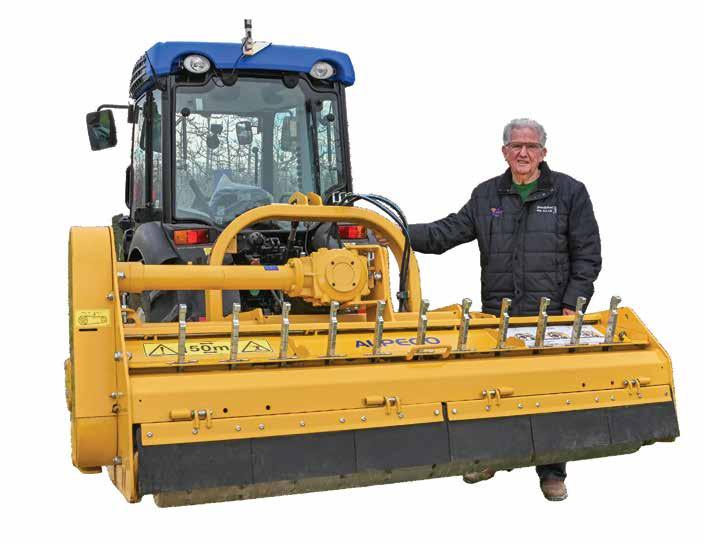

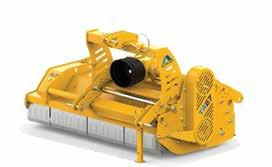

TAGGING THOUSANDS
of new-born lambs at docking takes precision and tag technology that handles the volume at a good pace.
After successful trials on several farms last spring, Allflex launched its new generation RapIDMatic Evo applicator and RapID Evo tags nationwide just before Fieldays 2025.
Among the trial farms was Hawke’s Bay coastal property Te Tumu Station where the new
RapIDMatic Evo applicators reliably installed RapID Evo tags in more than 10,000 lambs at docking.
Manager Jaime Pickens says Te Tumu’s total lamb crop is destined for finishing on chicory for the Lumina lamb programme through sheep genetics and logistics company Headwaters, so lambs must be tagged at docking to ensure a traceable source of data on every animal.
Jamie says the new

RapIDMatic Evo applicator is a significant step forward on the earlier model applicator.





“There is no jamming with the RapIDMatic Evo applicators and that meant the docking team could get through the mobs without any stoppages and at a good pace,” he says.
He deliberately ordered extra new RapIDMatic Evo applicators to ensure he had several back-ups, just in case of breakdowns, however, that proved unnecessary and three of the new applicators remained unopened at the end of docking last spring.
He says excellent tag retention was a big advantage from using the new RapID Evo tags so they can track the graz-
ing history for each lamb and capture the premium available from supplying the Lumina programme.
Pickens also likes the compact design of the new RapIDMatic Evo applicator and says they are easy to operate even when lambs are tucked into a docking chute. Each applicator can take up to 20 tags in a roll which also improves the speed of application. The tags can be ‘prerolled’ so they are ready to load into the applicator as the previous roll runs out.
Allflex NZ sales lead Christopher Jennings says he is pleased with the feedback from farmers on the company’s new RapIDMatic Evo applicator and RapID Evo tags.
“The new tamper
proof cap on our tags significantly improves their retention and reduces the risk of over application, so shearers and farm staff will appreciate the tip of the bayonet on the tag won’t catch on them when they are handling sheep on farm,” he says.
The new RapID Evo tags have a high-quality transponder built into the stem to maximise EID read distance and the tags are available in strips of 20 in a range of colours, printed in both alpha and numeric options.
The new RapIDMatic Evo multi-shot applicator features a larger internal barrel with an improved tag feeder and guide for easier loading of tags and less jamming.
TE TUMU Station is part of Big Rural Limited, the farming enterprise owned by Big Save Furniture. The station covers 2500ha in total and has about 2000ha effective, running 1000 cows and up to 9000 ewes in a terminal sire operation. Replacement twotooths are bought in each year so all the ewe flock is mated to terminal sires and all the lambs are moved on to other Headwaters client farms for finishing for the Lumina lamb programme, says station manager Jaime Pickens
“All our lambs are tidied up by March each year so we can avoid the typically dry East Coast conditions and put the feedback into ewes and cows for next season’s crop of lambs.” The cows are mated to Rissington sires and the bull progeny are returned to Rissington for its dairy sire programme.
“The cutting mechanism that separates each tag has been improved for increased reliability of tag application and we’ve added new shock absorbing handles on the applicator to reduce the jarring effect for users as well.”




BEEF + LAMB New Zealand says it is seeing strong farmer interest in its newly launched nProve Beef genetics tool, with early feedback and usage insights confirming its value in helping farmers make better breeding decisions and drive genetic improvement in New Zealand’s beef herd.
From March to June 2025, sessions on the nProve platform surged by 76% compared to the same period last year, up from 5069 to 8902.
This growth is almost entirely due to the launch of nProve Beef, which attracted 3800 sessions, making up 41% of total traffic.
nProve Beef is a key output of the Informing

New Zealand Beef (INZB) programme, which aims to enable the uptake of improved genetics across the beef industry by providing farmers with practical tools tailored to New Zealand farming systems.
“The response to nProve Beef has exceeded expectations,” says Dan Brier, general manager, farming excellence at Beef + Lamb New Zealand.

has remained steady, the rapid adoption of nProve Beef demonstrates the strong appetite among commercial beef farmers and bull breeders.”
The top five regions using the tool - greater Auckland, Canterbury, greater Wellington, Manawatū-Whanganui and Otago - show the tool’s reach across a range of farming environments.
The programme is investing in new genetic evaluation tools, data systems, and extension to increase the rate of genetic gain and help farmers select animals that perform well in New Zealand conditions.
“Genetics are a key lever for long-term change,” says Brier.
“The annual decision of which sires to buy, impacts the production and profit of a farm for many years.
“It confirms that there’s strong demand among farmers for tools that take the guesswork out of bull selection and help build more productive, profitable and resilient beef herds.


“Farmers are not just
clicking in, they’re staying on the site. The average session duration exceeds six minutes, highlighting real engagement with the tool.
“While use of the original nProve Sheep tool
The INZB Programme, a seven-year partnership between Beef + Lamb New Zealand and the Ministry for Primary Industries’ Sustainable Food and Fibre Futures fund, is focused on building a sustainable future for New Zealand’s beef sector.
“By making powerful tools like nProve accessible to farmers, we’re helping to accelerate that change and build a more productive, efficient and environmentally sustainable beef industry.”




















CERTAINLY A late
starter in the self-propelled harvester arena, Krone has gone on to be a key player, with 2025 marking the 25th anniversary of presenting the results of its R&D programme, with a leap into high horsepower machines – the first BiG X with a claimed 540hp.
With commercial production starting in 2003, the company offered the Big X-V8, powered by a Mercedes Benz OM 502, delivering 605hp and the BiG X-V12 featuring the larger MB OM 444, with a mighty 780hp under the hood.
Selling around 200 machines over the next two years, 2005 marked the release of a rather special BiG X, which became the world’s first SPFH prototype that pushed through the 1000hp mark. Until recently, only John Deere has hit that mark, while market leader Claas still sits in the 900hp sector.
To achieve the
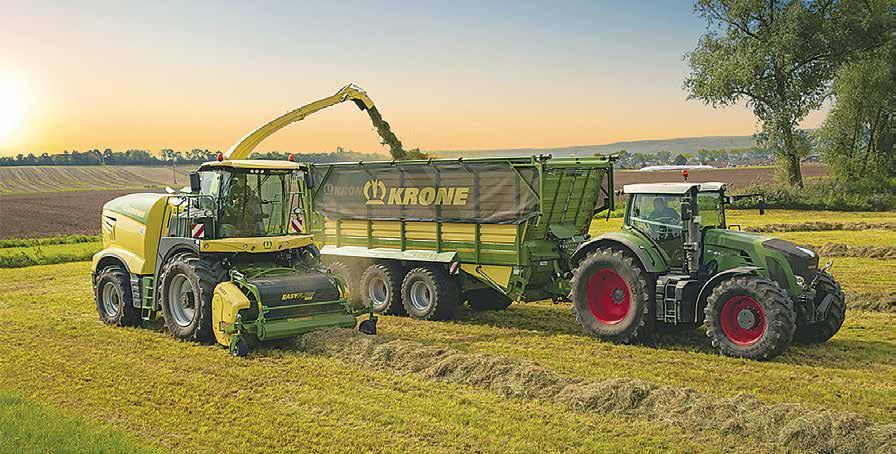
1000hp, the Krone was equipped with twin, synchronised six-cylinder motors, while over the next few years, the second-generation machines offered power outputs from 500hp to 1100hp.
In 2010, the third-generation arrived and twin engines disappeared, to
be replaced by larger, single engines with the BiG X 700 using a V8 and the BiG X 850 and 1100’s running V12 engines.
In 2013, the company addressed the lower horsepower segment, launching the BiG X 480 and 580, both featuring a narrower 630mm
chopping drum and the introduction of an independent rear wishbone suspension, alongside improved rear visibility and manoeuvrability.
Alongside the small series, which were complemented in 2015 by the BiG X 530 and 630 in 2015, the company also
presented new maize headers at Agritechnica 2013, with its first six-row maize header - the EasyCollect 450-2, offering a working width of 4.5m.
The company did not neglect the high horsepower end of the market though, and the fourth-generation





MyVitality supplements are formulated, tested, and bottled right here in New Zealand.
For over 6 years, Kiwis have trusted us to support healthy aging – with proven ingredients, science-backed quality, and products that help you stay active on the land and at home.
of harvesters was launched in 2017, with the range-topping BiG X 1180(1156hp) being added the following year. Another innovation was the LiftCab, which raised the cabin by 70cm, alongside the arrival BiG X 980 and BiG X 1080 in 2022, in response to
global demand in the 900-1000hp power range. Today, two series offer a total of 10 models, with the smaller outfits covering 490 to 653hp via the BiG X 480-630, while the BiG X 680 to 1180 offers 687-1156hp.
@rural_news
facebook.com/ruralnews



WHILE WE continue
to see more Chinese car manufacturers tempting us with new offerings, is it time for farmers and growers to be taking a closer look at Chinese tractors?
Chinese manufacturer Weichai Lovol has recently opened a new plant said to be capable of building a new 100hp+ tractor every four minutes and over 100,000 units a year. Covering an area of 52ha (128ac), at an estimated cost of US$420 million ($710m), the plant at the company’s headquarters at Weifang (Shandong Province), is

claimed as the world’s most modern tractor plant. Chairman of Weichai Lovol, Wang Guimin, says that “this intelligent tractor manufacturing
base represents not only the pinnacle of smart manufacturing in China’s agricultural machinery sector but also a crucial step in Lovol’s journey to
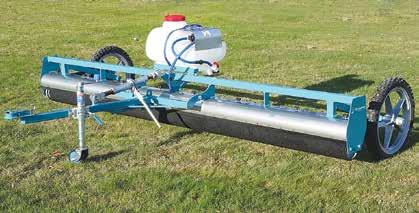
becoming a world-class brand”.
Featuring high levels of automation, the production facility uses a cluster of 500 indus-


trial robots, with 93% of machining, 72% of welding and 95% of the painting process automated. Robots also enable 360° variable-position cleaning
for housings, alongside areas such as bolt-tightening and glass glueapplying robotic arms, with over 100 Automated Guided Vehicles (AGV) operating throughout the plant.
Many of the tractors pieced together inside the new 170,000m² (39ac) assembly building, are over 100hp, but will also include a range of CVT or powershift models from 50 to 500hp for domestic and export markets.
The first tractor to leave the new assembly line at the opening ceremony was a 340hp model P3404, the entry level to the P8000 series, featuring an in-house, 9.5-litre Stage V Weichai block,
mated to an internally developed CVT, capable of a top speed of 40km/h and tipping the scales at 13.7 tonnes.
Currently being built in two phases, the first, now operational, centres around manufacturing, machine assembly, R&D, and testing, alongside manufacturing complete units such as housings, chassis assembly and painting.
Phase two, under construction, will incorporate a high-end R&D testing ground, and a distribution centre capable of handling daily inwards/ outwards international logistics centre to facilitate, build and ship up to 400 tractors each day.



WHILE WE’VE become used to National Fieldays telling us that their event is always a big one and nearly all sites have been sold, this years’ event was noticeable by empty sites, equipped with benches for resting.
Up in Europe, the news reaches us five months early with the show organiser of the Agritechnica Event –DLG – telling us that the show is fully sold out, with 2700 exhibitors filling all of the 23 exhibition halls, which offer close to 100 acres of floorspace. At the last event in 2023, 470,000 visitors passed through the entry gates, giving an impression how big the show really is.
With 65% of exhibitors from abroad (more than 50 countries), the majority are from Germany, followed by Italy, China, Turkey, the Netherlands, France and India. Similar num-

bers are expected to visit Agritechnica 25, which runs from November 9 to November 15.
Timo Zipf, Agritechnica project manager, comments, “The industry continues to time its innovation
launches with Agritechnica. Numerous companies have expressed strong support for our new ‘7 days, 7 topics’ concept, which aligns specific technologies and themes with targeted visitor groups on each day.”
The new initiative delivers focused knowledge and events each day for specific visitor groups, including family farms, large-scale operations, dealers, contractors and international professionals. The week opens with
the innovation and press day, followed by two agribusiness days, with limited ticket availability, aimed at large-scale farmers, dealers and contractors. Mid-week features the International Farmers Day (highlighting Canada, the Czech Republic, and France) alongside Digital Farm Day, which explores how digital technologies are enabling smarter, more efficient farming. The program continues on the Friday with the Young Farmers Day and ensuing party. The last day of the show will be a festive ‘celebrate farming’ day, ending noisily at 6pm with all tractors and machines blasting horns in tribute.
If you’ve not yet sorted travel and accommodation to the world’s largest agricultural machinery trade fair, now’s the time to get your A into G!
SHOWCASED WITH a T7.245 at the recent National Fieldays, New Holland has expanded its T7 tractor range offering in New Zealand with the launch of a new Tier 3 long-wheelbase configuration, aimed at users looking for a reliable, no-fuss workhorse. Developed following extensive consulta-
tion with New Holland customers, looking for a solution with reduced complexity and without compromising on performance, CNH sales manager David Knowles said the new model was built with the power to perform and designed for functional versatility across a wide range of farming operations.
“There’s no AdBlue

Don’t put good fertiliser on compacted soil which can’t absorb it. If your soil can’t support 15cm root growth and good worm population check for compaction. You could need aeration. In dollar terms, what would 20% production increase mean to your yearly turnover?
YOUR GREATEST ASSET

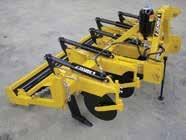
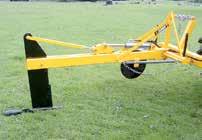


required which is something new for this T7 range, making it easier to use and maintain,” said David. “Whether it’s
a premium connected machine or the new versatile Tier 3 platform alternative, we now have a complete offering to

satisfy every customer.”
Available in 180hp, 200hp, and 220hp, the new T7 model offers a choice of Power Com-





mand or Auto Command transmissions, multiple spec levels, and optional technology capabilities, with loader compatibility also adding versatility across different operations.
The new T7 model came in three different configurations, starting with the base level tractor featuring a Power Command transmission, mechanical remotes with the classic cab. The midlevel choice also offers Power Command, complemented by electric remotes, while the premium level offers the Auto Command transmission with electric remotes, with the option of a factory fitted, GPSready kit.

FIL’S NEW Milker’s Wipes have landed in New Zealand.
Designed for use before sampling, treating, sealing, or milking, Milker’s Wipes are formulated with 75% ethanol for rapid disinfection. Each tub comes with 150 ready-touse wipes and is ACVM-approved for use on lactating animals, including dairy cows, goats, and sheep.
“We know our farmers need ‘no’ fuss hygiene options,” says Mike Robinson, FIL’s national sales manager.
“These wipes have been designed for busy farmers who take milk quality seriously and also want simple, reliable solutions.
“They’re ideal for disinfecting teats before first milking, or sanitising hands and udders before dry cow therapy or teat sealant application, helping reduce contamination and support udder health from the get-go.” Milkers Wipes are available in Farm Source stores.


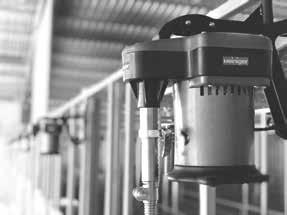















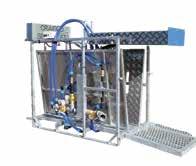

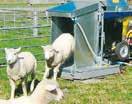


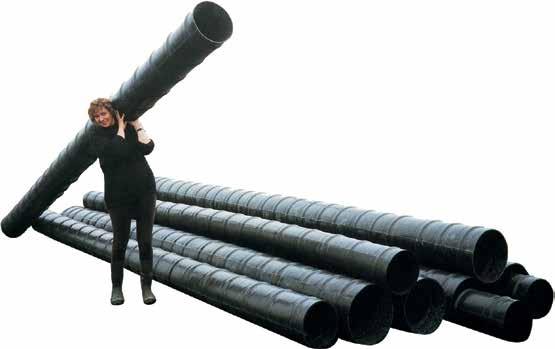






“When kiwi Bert Hansen decided to invent a pipe fitting for farmers to join alkathene poly pipe together, his main focus was to keep it simple and make it last!
50 years on, and with over 100 million fittings in the ground, Bert’s pipe fittings are still simple to use, unquestionably time tested, but most importantly trusted by kiwi farmers”
Don’t just ask for a pipe fitting, ask for a Hansen fitting!
